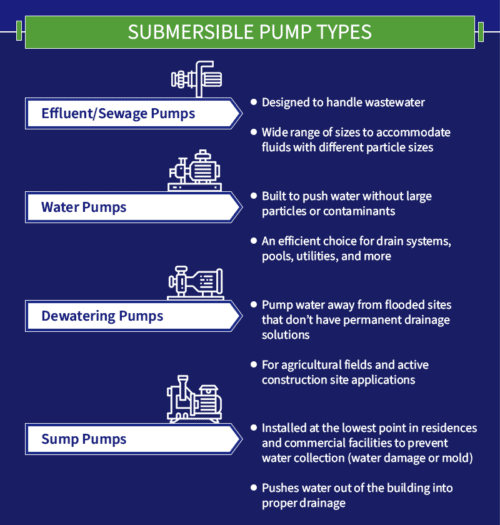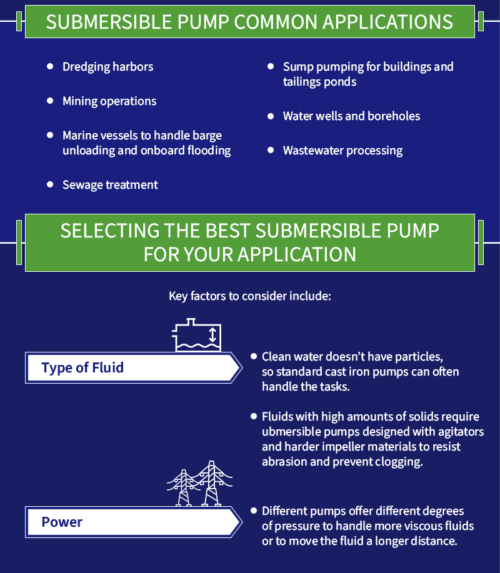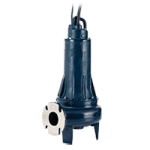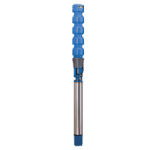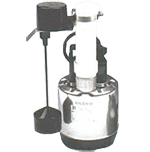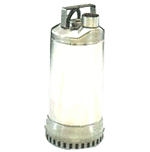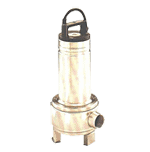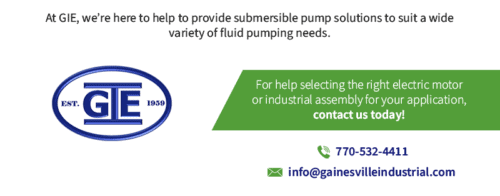Submersible Pumps
Request a QuoteLike any other pump, submersible pumps are used to move fluid from one point to another; however, they are completely submerged in the fluid or medium they are required to pump. This type of pump features a hermetically sealed motor that is close-coupled to the pump body, which is contained in a water-tight enclosure to prevent the entry of liquid and to protect the motor from damage.
Submersible pumps work by using the head of fluid to push it forward rather than pull it up. This pumping process is extremely efficient because it requires no energy. A submersible pump’s motor is cooled by the fluid around it to prevent overheating.
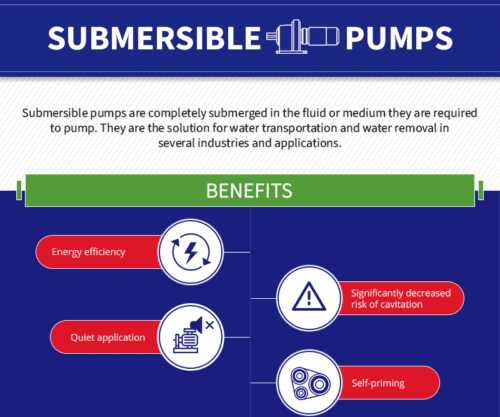
These pumps have various benefits, including:
- Energy efficiency
- Significantly decreased risk of cavitation
- Quiet application
- Self-priming
Submersible Pump Types
These pumps can be used in everything from municipal wastewater systems to oil and gas processing.
Four common types of submersible pumps include:
. Effluent/Sewage Pumps
These submersible pumps are designed to handle wastewater. They push water and sewage from a septic tank or treatment facility to a secondary point, such as another treatment system or drain field. These pumps come in a wide range of sizes to accommodate fluids with different particle sizes.
. Water Pumps
Submersible water pumps are built to push water without large particles or contaminants. They can be used to move water from one point to another, and they offer an efficient choice for drain systems, pools, utilities, and more.
. Dewatering Pumps
Dewatering pumps are used to pump water away from flooded sites that don’t have permanent drainage solutions. Agricultural fields and active construction sites are vulnerable to standing water, and submersible dewatering pumps are used to mitigate the risk of site damage by transporting water to drainage pits or tanks for off-site removal.
. Sump Pumps
Sump pumps are installed at the lowest point in residences and commercial facilities to prevent water collection, which could result in water damage or mold. For example, if floodwater, runoff, or accidental spills collect in a basement, the water moves into a sump, or pit, in the floor. The sump pump pushes that water out of the building and into proper drainage.
Common Applications
Submersible pumps are used in a wide range of environments and applications. Some of the most common applications include:
- Dredging harbors
- Mining operations
- Marine vessels to handle barge unloading and onboard flooding
- Sewage treatment
- Sump pumping for buildings and tailings ponds
- Water wells and boreholes
- Wastewater processing
Selecting the Best Submersible Pump for Your Application
When selecting the right submersible pump, it is crucial to consider the needs of your applications. Key factors to consider include:
- Type of fluid. Clean water doesn’t have particles, so standard cast iron pumps can often handle the tasks. However, fluids with high amounts of solids require submersible pumps designed with agitators and harder impeller materials to resist abrasion and prevent clogging.
- Power. Different pumps offer different degrees of pressure to handle more viscous fluids or to move the fluid a longer distance.
Submersible FPS and Goulds Pumps Solutions
At GIE, we supply our clients with the following categories of submersible pump solutions:
- FPS Submersible Pumps and Packaged Systems. These pumps are preferred for HVAC, agriculture, municipal, and other large-scale pumping systems.
Goulds Pumps Submersible Pumps. Goulds Pumps submersible pumps use electric motors and cutting-edge hydraulic engineering.
Goulds Pumps Submersible Sump Pumps. These sump pumps are built for residential and light commercial usage.
Goulds Pumps Submersible Dewatering Pumps, Effluent Pumps & Water Pumps. This line of pumps can handle pumping out tanks and reservoirs from hospitals, municipal areas, parks, and more.
Goulds Pumps Submersible Sewage Pumps. Goulds Pumps submersible sewage pumps are outfitted to handle solids and come in a variety of diameters.
Contact GIE for Your Submersible Pumps Needs
Submersible pumps are the solution for water transportation and water removal in several industries and applications. At GIE, we’re here to help to provide submersible pump solutions to suit a wide variety of fluid pumping needs. Contact us today to learn more about our pump selection or request a quote to start your order.
Related Video:
Related Content:
Infographic – click to expand:

